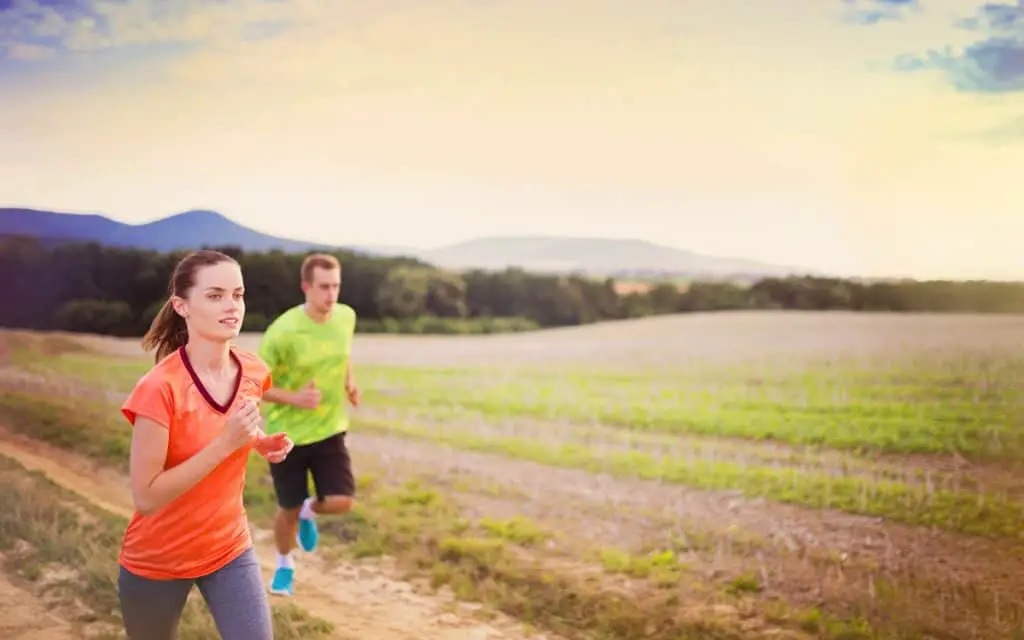Zero drop running shoes used strategically can be good fun. But they can also be a disaster and cause an injury if used incorrectly.
They shouldn’t be confused with barefoot running shoes and shouldn’t replace your ‘normal’ shoes as soon as you take them out of the box.
But use them correctly and running in the best zero drop running shoes can be a liberating experience.
Zero Drop, Minimalist, Barefoot: What’s The Difference?
Zero drop, Minimalist and Barefoot (for the rest of the article minimalist = barefoot) running shoes all share one characteristic. The stack height is the same at both ends of the shoe.
Zero drop shoes have cushioning along the underside of the shoe making them a more comfortable ride than a barefoot shoe.
A barefoot shoe has minimal, sometimes extremely minimal cushioning. Often the rubber in the sole of the shoe is the only cushioning and that’s the point. It is intended to give the wearer a close to the ground running experience.
That’s a different purpose to a Zero Drop shoe.
When Would you Use a Zero Drop Running Shoe
A lot of runner transition to zero drop shoes to help with their training. You use a lot more muscles than you are used to in a pair that have a 5 or 10 mm stack difference. You will gain feet and leg strength running in zero drop shoes.
For most people zero drop shoes are part of their running shoe rotation. Preferring other types of shoes for longer or faster runs. For some, such is their love for zero drop running they never go back.
Some people wear them as fashion shoes. I cant quite get my head around that. Not (only) because I have no sense of fashion. But they cost the same as specialist running shoes.
Take a look at this study into the more extreme end of zero drop shoes and their effects on running efficiency.
How To Transition to Zero Drop
Slowly!
If you pull on a pair of zero drop shoes for the first time, walk before you run. Get a feel for them before you go for a short run around the block.
Your legs and feet wont know what hit them. The Achilles tendon will be stretched more than in your running shoes.
Once you’ve got the initial testing out of the way slowly build up to one 5k a week and stay there for a few months or even years. There are many stories out there where people have gone at it too hard too fast and things have ended up in disaster.
That said there are just as many people out there who have benefited from switching to zero drop shoes. That foot niggle that has plagued them for many years suddenly disappears after a few runs in zero drop shoes.
However my first comment on transitioning to zero drop running shoes is the best – slowly!
How To Choose Your Zero Drop Shoes
If you’ve never run in zero drop shoes consider a transition pair of shoes with a 4mm drop. This is less of a drop than most running shoes out there and could help prevent an injury. If you are over 40 or injury prone, I would definitely recommend this step in the transition.
If you want to dive right in to zero drop shoes consider shoes with plenty of cushion. Remember zero drop doesn’t have to mean zero cushion.
Comfort is still the number one consideration when buying a pair of zero drop shoes.
Beyond comfort suitability for the terrain should be considered as should durability.
Conclusion: Best Zero Drop Running Shoes
Running in zero drop shoes is something that should be approached with care and consideration. Done correctly it can be a fun and liberating way to run.
Start by running short distances slowly and gradually build from there. You probably will experience some discomfort but this is only to be expected while your body adjusts.

Frequently Asked Questions:
Will zero drop running shoes improve my running performance?
Not as much as improvement with your strength, cadence, stride length and Vo2 Max. But they can play a part in strengthening your feet and legs.
Are All Zero Drop Shoes A Firm Ride?
No. But most are when compared to a ‘normal’ running shoe.
Are my calves likely to hurt when I start to run in zero drop shoes?
Quite possibly. Keep the initial runs very short to give your legs time to adjust and recover.
What is the advantage of zero drop running shoes vs barefoot running shoes?
They are kinder to your feet and calves.
What’s the biggest problem people have when starting to run in zero drop shoes?
The extra elongation of the Achilles tendon can result in an injury.
What’s one of the main advantages of running in zero drop shoes?
They can promote a more natural stride. Most people also report a true sense of freedom and fun.

